Overview
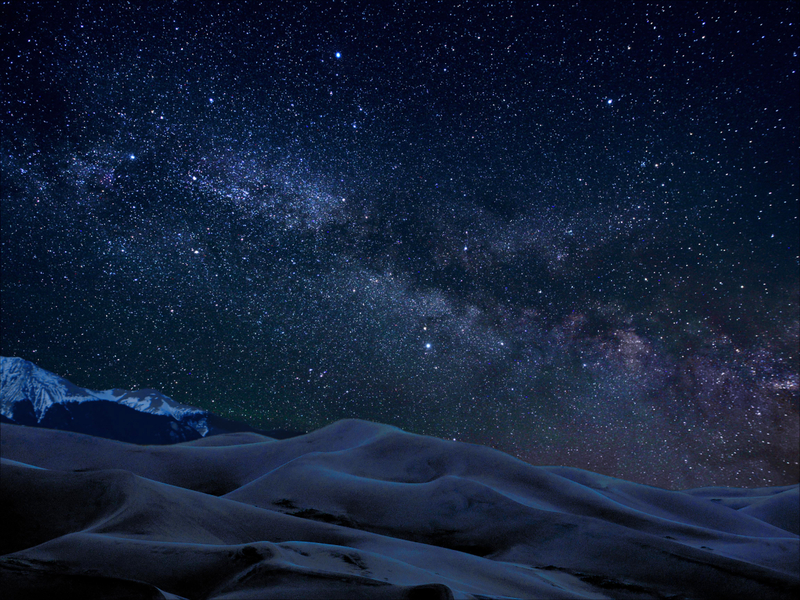
Great Sand Dunes National Park is a unique and stunning landscape located in the San Luis Valley of Colorado in the United States. Spanning 150,000 acres, the park features the tallest sand dunes in North America, stretching up to 750 feet tall against the backdrop of the Sangre de Cristo Mountains. The park is also known for its alpine lakes, shallow waters, and diverse wildlife, making it a popular destination for outdoor enthusiasts of all kinds. In this article, we’ll delve into the history, geography, and attractions of Great Sand Dunes National Park to give you a comprehensive overview of what the park has to offer.
Geography

Great Sand Dunes National Park is located in Saguache and Alamosa Counties, Colorado, covering an area of approximately 107,342 acres. The park is nestled within the San Luis Valley and the Sangre de Cristo Range of the Rocky Mountains, with elevations ranging from 7,515 feet to 13,604 feet above sea level.
The most prominent feature of the park is the dune field, which spans approximately 30 square miles. The dunes are considered the tallest in North America and are formed by the predominant southwest winds that carry sediment from the San Luis Valley. Additionally, the park features sand sheets that contain about 90% of all the sand in the park. The surrounding landscape includes forested and snowcapped mountains to the east, and snow-fed creeks and alpine lakes that offer visitors a refreshing respite from the sand.
One of the unique characteristics of Great Sand Dunes National Park is its size. Although the dune field occupies relatively small real estate, the park as a whole is quite expansive, with numerous individual sites and features that are worth exploring. For example, visitors can hike the trails along Mosca Pass Trail or Medano Pass Road, explore the shallow waters of the park’s creeks, or marvel at the stunning mountain ranges.
Overall, the geography of Great Sand Dunes National Park is nothing short of diverse. From the park’s towering dunes to its snow-capped peaks, visitors can experience a range of landscapes that are as breathtaking as they are memorable.
History
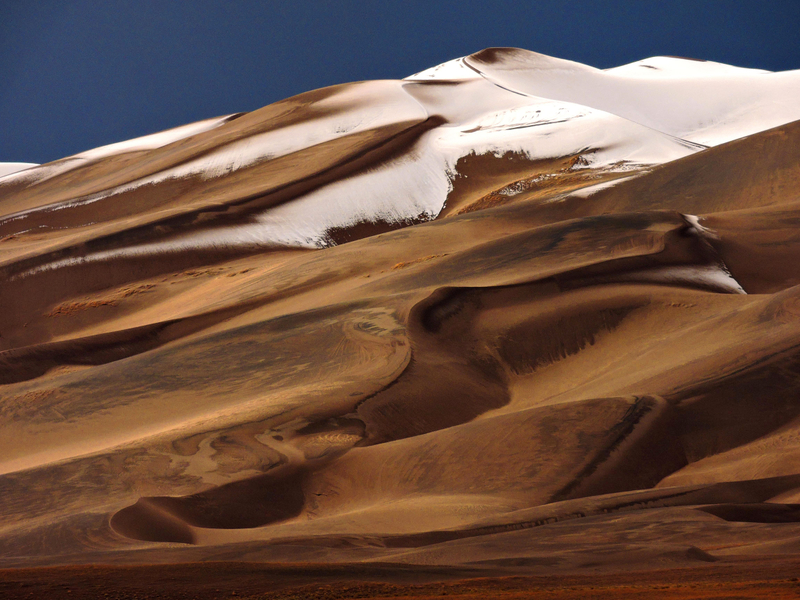
Great Sand Dunes National Park has a rich history that dates back thousands of years. The area around the San Luis Valley was traditionally inhabited by various indigenous tribes, including the Ute, Navajo, and Apache. The Ute people called the Great Sand Dunes “Saa waap maa nache,” which translates to “sand that moves.” The Navajo also held the nearby Blanca Peak as a sacred mountain and often made pilgrimages to the summit.
In the 19th century, the San Luis Valley became a hub for settlement as the United States expanded its territory. The area was considered to be of strategic importance and in 1852, the federal government established Fort Massachusetts to protect the settlers moving west. The fort was abandoned in 1858 after a series of conflicts with the local indigenous tribes.
The development of Medano and Mosca Passes in the 1870s by the railroads opened up the area to further settlement, and small towns began to emerge. However, the region remained primarily agricultural and relied heavily on farming and ranching.
One family that played a major role in the development of the area was the Herard family. In the early 1900s, Walter Herard purchased a ranch in the area and eventually became one of the largest cattle ranchers in the San Luis Valley.
Additionally, the nearby Rocky Mountains experienced a gold and silver rush that brought prospectors and miners to the area. While large-scale mining didn’t occur in the sand dunes themselves, there was small-scale placer mining along Medano Creek.
Today, visitors can explore the rich history of Great Sand Dunes National Park through various exhibits and interpretive programs offered by the National Park Service. The park provides a unique glimpse into the interwoven history of indigenous communities, westward expansion, and economic development of the San Luis Valley.
Dark Sky Park
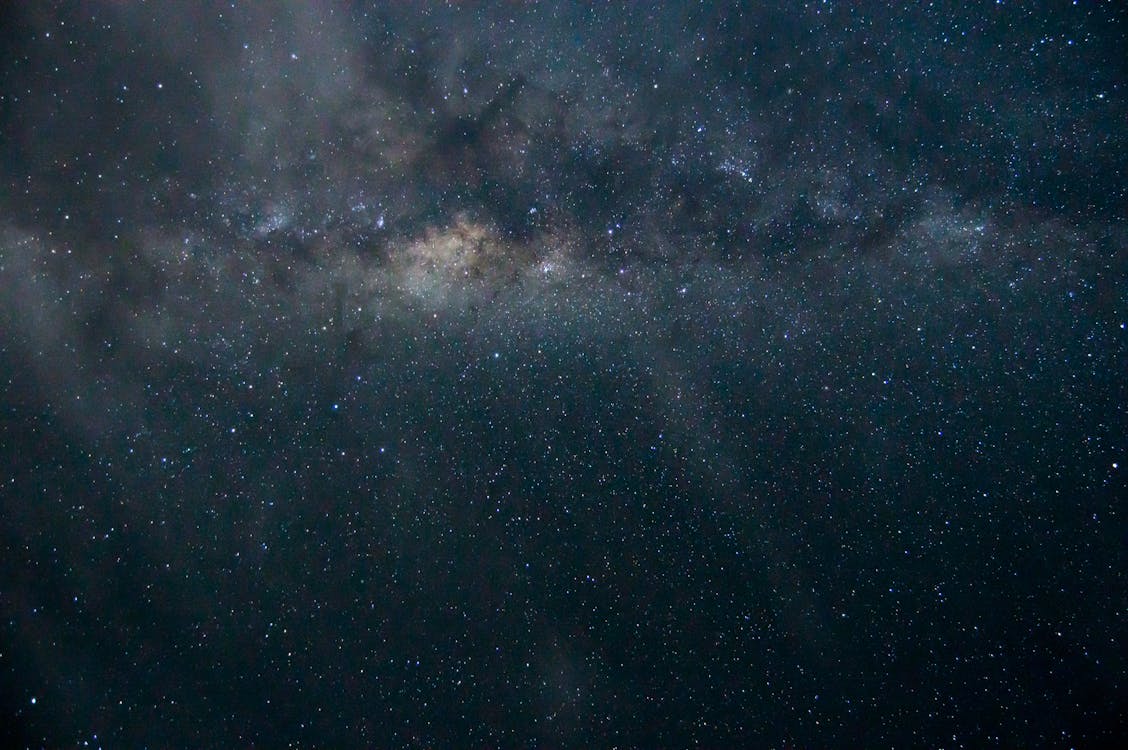
One of the most unique experiences of visiting Great Sand Dunes National Park is the opportunity to witness the stunning night sky. With almost no light pollution and countless stars, this park truly offers a one-of-a-kind stargazing experience. Whether you’re an amateur astronomer or just enjoy gazing up at the night sky, the Dark Sky Park is a must-see during your visit to Great Sand Dunes.
International Dark Sky Park Status
Great Sand Dunes National Park is among the few places in the world to be awarded the International Dark Sky Park status. This prestigious designation is a recognition of the park’s exceptional night sky visibility and the park’s efforts to preserve this unique natural resource.
The International Dark Sky Park Status is awarded to parks that implement measures to minimize light pollution, have exceptional night skies, and undertake public outreach and educational programs. Great Sand Dunes National Park’s location in a remote region, with little human habitation, makes it ideal for offering stargazing experiences.
The park’s high altitude, situated between the Sangre de Cristo and San Juan Mountain ranges, provides visitors with outstanding views of countless stars. The park’s location in the San Luis Valley, with its shallow waters and sand creeks, also helps to reduce atmospheric interference, making it easier to view distant planets and galaxies.
The park’s night sky programs include ranger-led dark sky programs, visitor center exhibits that explain the vast cosmos above, and special stargazing events during meteor showers and other celestial events. Visitors can also bring their own telescopes and stargaze anywhere in the park, with the west side of the dune field offering the best 360-degree viewing.
Star Gazing Experiences

With its remote location and limited light pollution, Great Sand Dunes National Park is an ideal destination for stargazers seeking an unforgettable night sky experience. The park’s International Dark Sky Park certification is a testament to the exceptional quality of its night skies. Here’s what you need to know to enjoy the ultimate star gazing experience at Great Sand Dunes National Park.
The most optimal time to view the stars at Great Sand Dunes National Park is during a moonless night, which provides the darkest sky. It’s best to plan your visit months in advance, especially if you want to camp in the dune field with a backcountry permit, as campsites fill up quickly. Additionally, the spring and fall seasons typically offer the clearest skies in the park.
To reach the highest point in the park and catch a breathtaking view of the night sky, hike to Star Dune. This dune, standing at over 750 feet, is the tallest dune in North America and offers a panoramic view of the horizon, making it an unparalleled location for stargazing.
To hike to Star Dune, take the Medano Pass Road to the Sand Pit Picnic Area. From there, head east on the Medano Creek Trail, then veer off to the north and hike over Medano Pass. The trail is approximately 8 miles round trip, and the route can be strenuous, so it’s essential to come prepared.
Camping
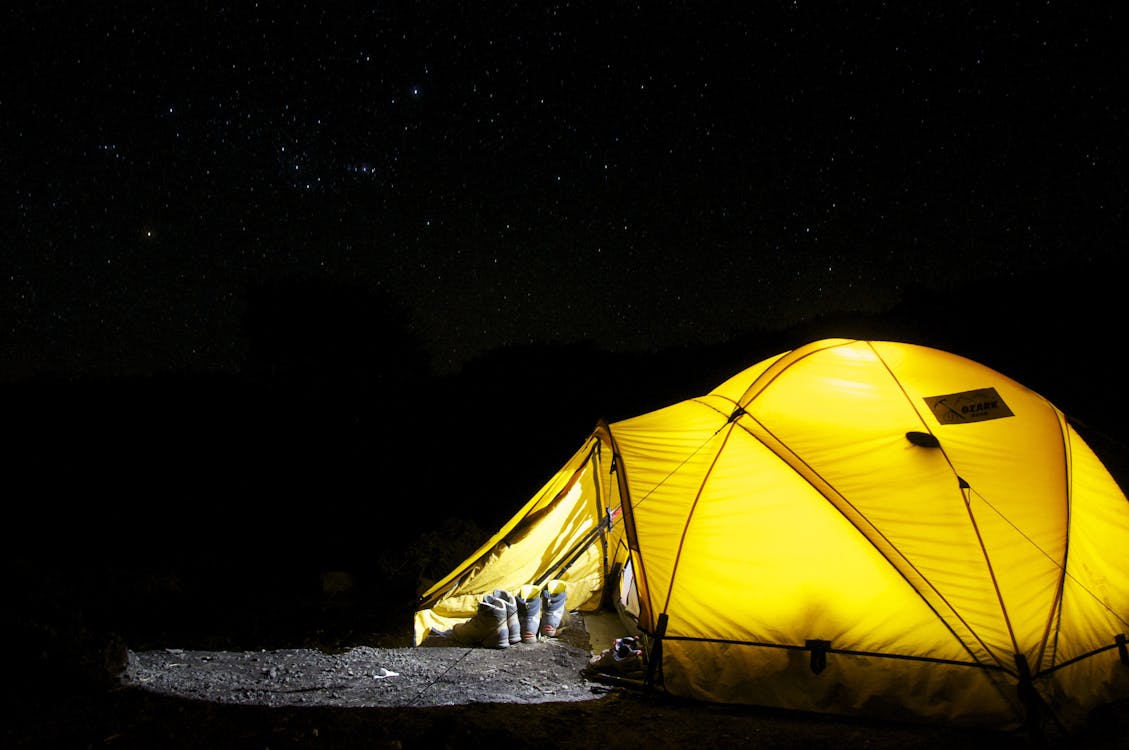
For the full dark sky experience at Great Sand Dunes National Park, consider camping in the dunefield with a backcountry permit. However, space is limited, so be sure to reserve your space well in advance. Alternatively, stay at the nearby Piñon Flats Campground, offering individual sites and flush toilets.
Great Sand Dunes National Park is an exceptional destination for star gazing enthusiasts, offering a world-renowned night sky experience. Start planning your next trip, and don’t forget to pack your red light for an unforgettable night under the stars.
Rocky Mountains and Sangre de Cristo Range
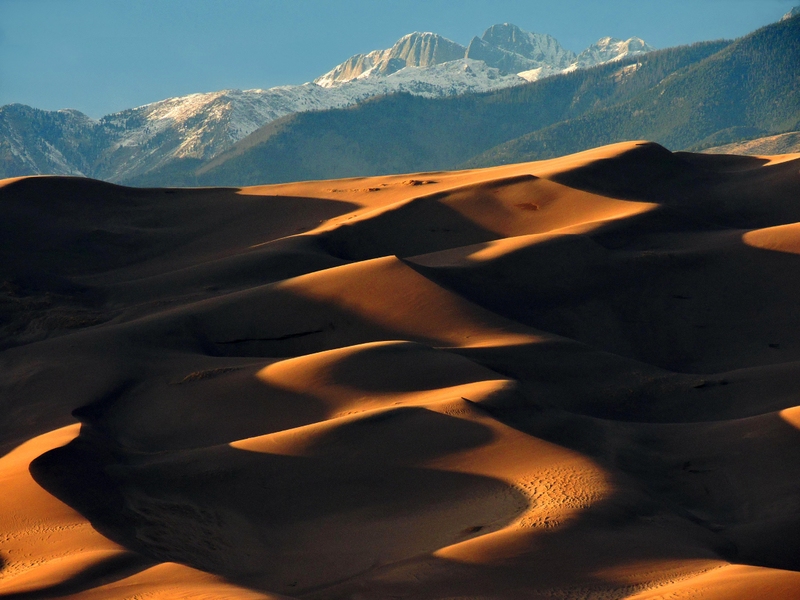
Great Sand Dunes National Park is one of the most picturesque places found in the Rocky Mountains and Sangre de Cristo Range in Colorado. The Sangre de Cristo Mountains are a range of rugged peaks that extend southeastward for about 240 miles from Poncha Pass in Colorado to Glorieta Pass in New Mexico. These mountains are part of the Rocky Mountains and provide a stunning backdrop to the park’s magnificent sand dunes.
The Sangre de Cristo Range was formed over millions of years by tectonic activity and the uplift of the continental crust. The range contains some of the highest peaks in Colorado, including Blanca Peak, which rises to an elevation of 14,345 feet. The San Luis Valley, situated to the east of the range, was formed by a giant uplift of the surface of the earth. The mountains around the San Luis Valley include the Sangre de Cristo Range, the San Juan Mountains, and the Wet Mountains.
The park’s sand dunes, which sit on the East side of the San Luis Valley, were formed over time as the winds carried sand grains from the surrounding mountain ranges, especially from the Sangre de Cristo and San Juan Mountains. The sand was then deposited by the winds in the valley floor, creating the largest sand dunes in North America.
The Sangre de Cristo Mountains offer many features and landmarks that enhance the natural beauty of the park. The mountains are home to a wide variety of wildlife, such as bison, mule deer, kangaroo rats, and numerous bird species. Moreover, hiking trails in the Sangre de Cristo Mountains offer visitors an opportunity to explore and enjoy the mountain range’s beauty. There is also a backcountry permit system that visitors can use to explore the more remote areas of the mountain range.
Some popular hiking trails include the Mosca Pass Trail, which starts near the park’s entrance and takes you up towards the top of the Sangre de Cristo Mountains. Another popular trail, the Medano Pass Road Trail, takes visitors on a journey through the park’s diverse terrain, leading to the park’s western boundary.
Square Mileage of the Entire Dune Field
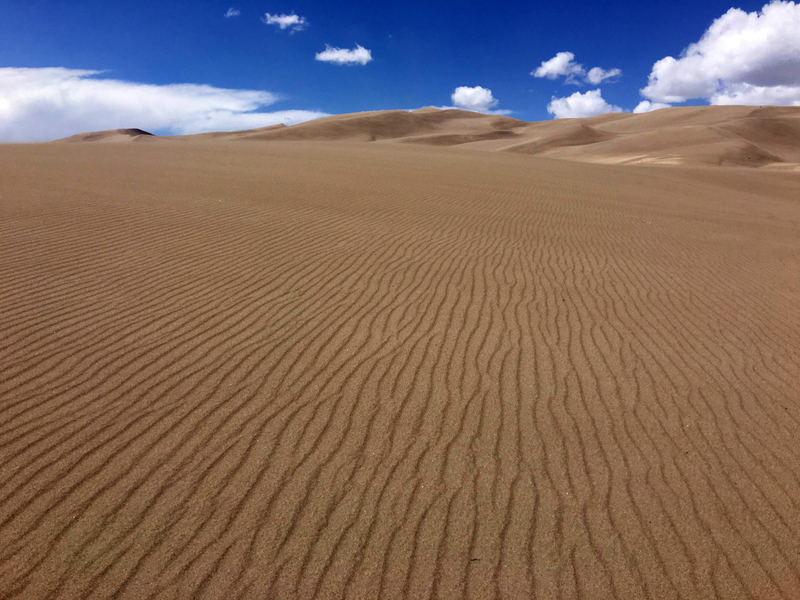
Great Sand Dunes National Park is one of the most unique and breathtaking nature destinations in North America. One of the park’s most impressive features is the massive dune field that encompasses over 30 square miles, making it the largest dune field on the continent.
The Great Sand Dunes National Park dune field is notable for its size and the fact that it has the tallest dunes in North America, which reach a height of 750 feet. The dunes stand out in contrast to the flat valley floor and offer visitors many opportunities for adventure and exploration.
While visitors are welcome to hike up any of the dunes for a spectacular view, it’s important to note that the steepness can be challenging for some. For those who prefer a more relaxed adventure, kids can take advantage of rolling down the dunes and exploring the hidden creeks and shallow waters that can be found scattered throughout the dune field.
The vast square mileage of the entire dune field ensures that visitors will never run out of things to discover and explore at Great Sand Dunes National Park. With its awe-inspiring landscapes and endless possibilities, this park truly deserves a place on any traveler’s bucket list.
Medano Pass Trail & Road
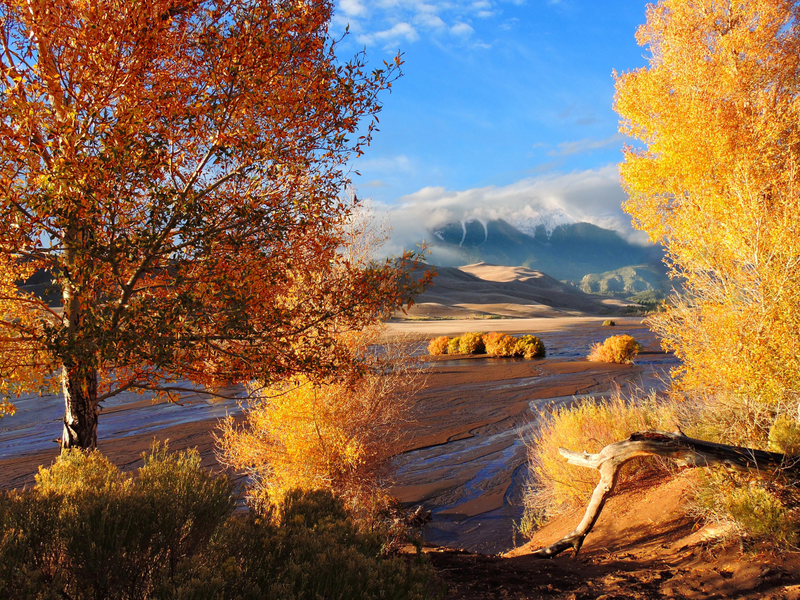
The Medano Pass Trail & Road is one of the most remarkable features of the Great Sand Dunes National Park. This 22-mile primitive road winds through the park’s vast dune field and the Sangre de Cristo Mountains.
To traverse this scenic route, visitors must have a 4WD vehicle with high clearance, as the soft sandy terrain can be challenging for regular cars. Fortunately, those who don’t have a suitable vehicle are able to rent one. Pre-booking is highly recommended, especially during the summer season when demand is high.
The Medano Pass Trail & Road crosses the Medano Creek nine times before reaching the pass at mile 11, allowing visitors to drive through shallow waters and enjoy water activities during warmer seasons.
Along the Medano Pass Trail & Road, visitors can discover 21 free camping sites that offer a remarkable backcountry experience. These sites provide an opportunity to camp closer to nature while enjoying the serene environment of the park.
For visitors who don’t have access to a 4WD vehicle, exploring the Medano Pass Primitive Road is still possible. Tourists can rent fat-tire bikes from Kristi Mountain Sports to admire the scenic views on this primitive road.
Overall, Medano Pass Trail & Road is a must-visit attraction for any visitor to the Great Sand Dunes National Park. Whether you decide to camp along the primitive road or take a scenic drive, the experience is sure to be unforgettable.
Valley Floor, Creeks & Lakes
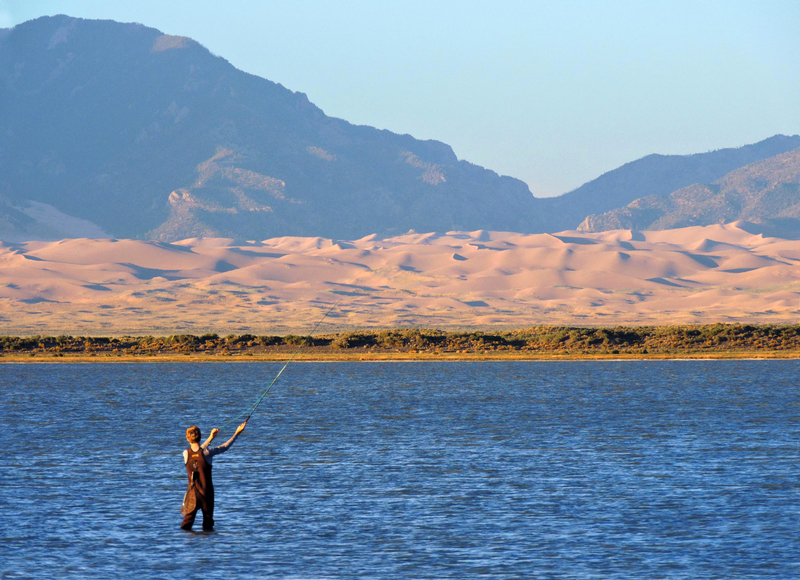
Great Sand Dunes National Park is not only known for its towering sand dunes, but also for its stunning valley floor that is filled with shallow waters that flow into streams and small creeks. Medano Creek is one of the most popular creeks in the park, known for its unique flooding during the spring thaw. During this time, visitors can witness Medano Creek transform into a raging river, providing an unforgettable experience.
Another stunning feature of the valley floor is Alamosa Lake, a serene and picturesque lake surrounded by the stunning Sangre de Cristo Mountains. The lake’s crystal clear waters reflect the breathtaking mountain range, making it a picturesque attraction for visitors to explore.
Sand Creeks is another notable body of water found in Great Sand Dunes National Park. These creeks flow through the eastern part of the park, and their shallow waters are perfect for wading through on a hot summer day. This experience lets visitors feel the refreshing coolness of the water in contrast to the park’s hot and arid sand dunes.
Bison Ranch and Trails
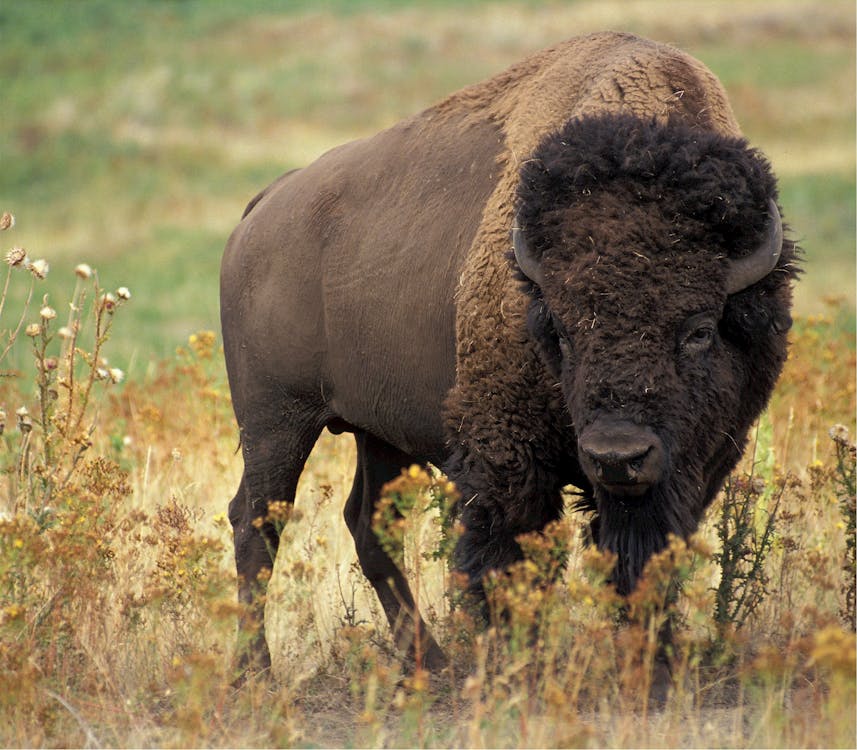
Great Sand Dunes National Park is also known for its diverse wildlife and breathtaking trails. One of the must-see attractions in the park is the Bison Ranch located on the valley floor. Here, visitors can witness the majestic bison herds grazing in their natural habitat from a safe distance. The ranch also offers shallow waters for visitors to cool off during the scorching summer months.
Aside from the bison ranch, the park is home to abundant wildlife, including mule deer, kangaroo rats, and various bird species. These animals can easily be spotted along the park’s numerous trails, making for a unique wildlife viewing experience.
There are several trails to choose from within the park, each offering a unique perspective of the park’s natural wonders and the Sangre de Cristo Mountains. One popular trail is the Mosca Pass Trail, which takes hikers through the rugged terrain of the San Luis Valley. The trail offers incredible vantage points of the surrounding mountain ranges and is a great way to experience the park’s diversity.
Another favorite among hikers is the Medano Pass Road, which winds through the entire dune field and leads to towering Star Dunes. The road offers visitors an opportunity to see the park from a different perspective, as well as access to individual sites for camping and picnics.
Whether you’re a seasoned hiker or a leisurely stroller, the trails of Great Sand Dunes National Park offer endless opportunities for exploration and adventure. With its rich wildlife, stunning scenery, and unique landscape, it’s no wonder why it’s a popular destination for outdoor enthusiasts.
